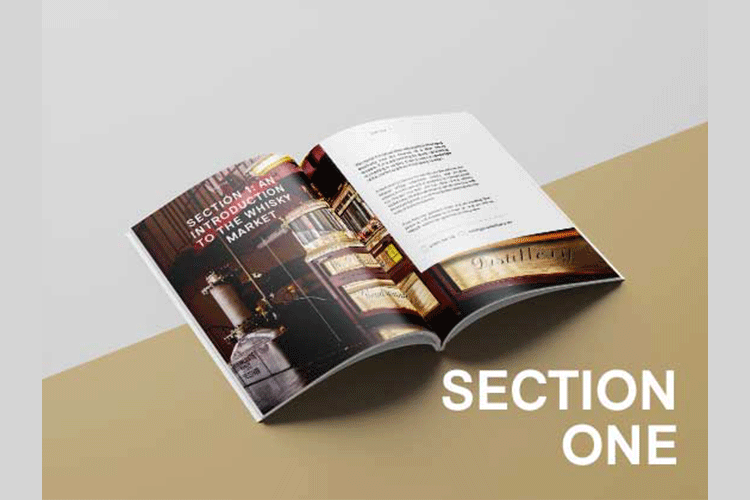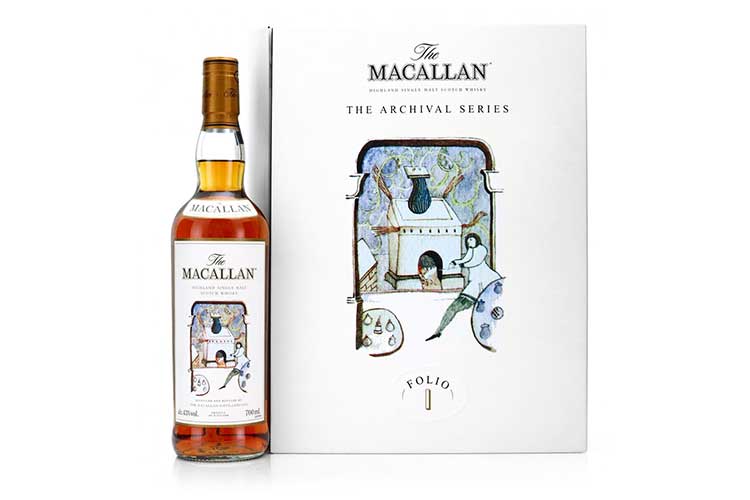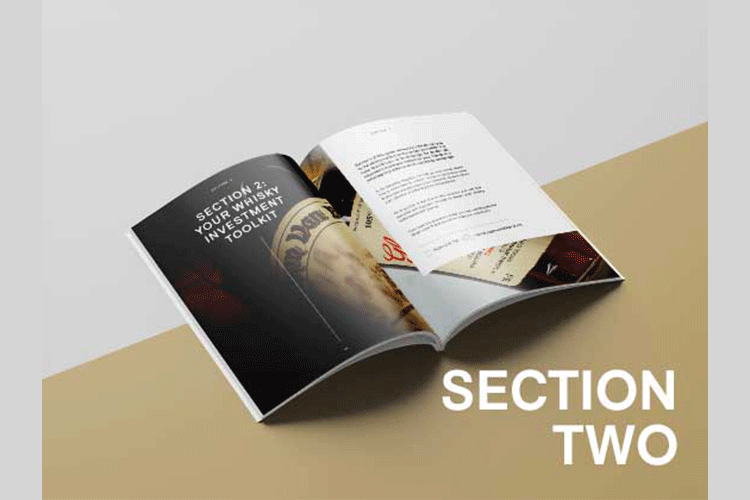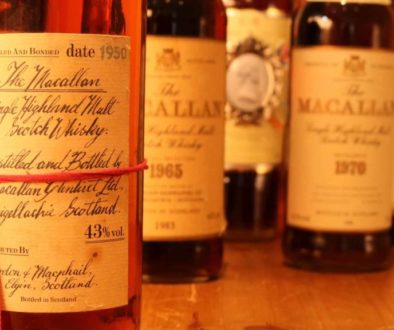At Mark Littler Ltd we have been working on our comprehensive Whisky Investment Guide, aiming to give investors and collectors an understanding of the market and the tools to navigate it. We aim to help you invest logically and with all the information at your disposal. The following article is an extract from the guide, covering non-fungible tokens and tokenised assets as well as how they might be coming to the whisky market.
We often focus on the pre-existing and physical methods of investment in the whisky market, but technological advancements have enabled investment to move into the digital sphere. Whilst digital investment has not yet entered the whisky market, is there the possibility of this in the future?

Non-Fungible Tokens: How Do They Work?
Our guide up to now has focused on the pre-existing and physical methods of investment in the whisky market, but technological advancements have enabled investment to move into the digital sphere. Whilst digital investment has not yet entered the whisky market, is there the possibility of this in the future?
The investment world is ever evolving and this is no more the case than with non-fungible tokens (NFTs). This may be a term you’ve never heard of before and it can become incredibly complex, so let’s have a look at what this means.
First of all, you need to understand what ‘non-fungible’ means. Something that is non-fungible is not interchangeable with anything else, it is unique. A fungible commodity can be swapped with other units of the same commodity. For example, cash is fungible because if you have one ten pound note, it could be interchanged with two five pound notes and you would still hold the same value. A non-fungible commodity does not have units of the same value that can be interchanged. Non-fungible tokens, therefore, are tokens that cannot be interchanged because each token is for an asset of unique value.
NFTs have been used for a range of purposes, but they were first designed for selling digital artwork. In this instance, the token acts as a certificate of authentication and ownership. This means that whilst digital artwork can be copied on the internet, only the person with the NFT owns the original. For instance, whilst millions of people can view a painting in a museum, only one person owns it.
NFTs utilise the same blockchain technology as cryptocurrencies. Blockchain is a digital database that stores information in a series of blocks, linked together in chronological order. Blockchains are utilised for their security and transparency. Blockchain relies on communities of servers in separate locations to verify parts of the chain of information in a ‘proof-of-work protocol’. This works on a consensus; if one server group doesn’t verify its part of the chain the whole blockchain fails and no further transactions are allowed. This doesn’t sacrifice the data already stored, however, and the blockchain can fork and reconnect. The benefit of using a blockchain, therefore, is that they are impervious to tampering as information cannot be easily changed in a block. It would require the physical takeover of multiple groups of servers.
Non-Fungible Tokens In The Whisky World
So how do NFTs and tokenised assets relate to whisky? Well at present, not at all, however we predict that they are coming into the industry in a huge way. Making whisky a tokenised asset would allow investors who cannot front a bill of tens of thousands of pounds for a whisky bottle to have a part in the high value releases. This is a way of democratising an industry that is becoming increasingly inaccessible to those with moderate budgets.
On the other hand, some would argue that far from democratising the market, tokenised whisky assets would help close ranks and enable the career investors to get richer whilst everyone else misses out. Those who can afford the high value bottles for tens of thousands of pounds, can charge a premium for the tokens to make a profit, thereby charging token holders over the odds for a percentage claim.
When selling tokens in whisky, blockchains become important because of the use of Smart Contracts. Smart Contracts allow the original asset holder to embed clauses into the tokens. For example, an asset holder may preemptively decide that once the bottle of whisky reaches X value, it will be sold. The profit can then be split between the token holders. It is this feature that will be vital if tokenised assets move into the whisky market.
The Risks of Non-Fungible Tokens
NFTs and tokenised assets do carry a number of risks and downfalls. One of the biggest downsides, and perhaps one of the most likely factors to contribute to popping the bubble of blockchain based tokens, is the environmental cost. This may seem surprising, but the proof-of-work protocol needed to make blockchains so secure requires an enormous amount of electricity.
Secondly, tokenised whisky will likely not appeal to whisky lovers as they will never get to experience the bottle first hand. Therefore, tokenised whisky will likely appeal to those career investors looking to make profit, regardless of the asset itself.
Finally, tokenised assets are currently unregulated as they are a relatively new investment strategy and are only now receiving a lot of attention. This makes it difficult to verify the original asset which in the world of whisky makes the idea susceptible to forgeries.
It is important to note, that whilst blockchain tokens are the most secure and transparent, blockchain is not the only available database to store tokens. There is the option of a standard digital ledger, similar to that used in digital banking, which would circumvent some of the issues associated with NFTs although they are not as secure when storing.
Whilst tokens could break into the whisky market in a big way, it is going to take a pioneering force to make some vital decisions. There are many ways that tokens can be used to buy and sell whisky and it is likely that the first to do it will set a precedent that will be copied time and time again.

“Make mine 9.25% of a bottle please…” – A Q&A with industry figure Ash Madhvani, Commercial Director at Bitz Solutions
With investment capabilities constantly evolving and new technology opening the doors to new methods, there is a huge amount of knowledge available and it can be difficult to keep up to date with. We are by no means experts in the arena of tokenised assets or NFTs so we have been in contact with the Commercial Director of Bitz Solutions, Ash Madhvani, to answer some questions about digital investment.
Q: Can you tell us a bit about fractionalisation? What does this mean?
A: My father always said that I have a taste for champagne but a budget for beer. Similarly, I want to invest in exotic items such as art, classic cars, and especially rare whisky. I can’t stump up the entry price and so it remains a delicious pipedream. Or does it?
Why not divide the ownership of fine whisky into lots of shares to make part ownership available to a wider network of investors like me? If there is a selection of fine whiskies, we can choose which ones we want to invest in and how much we want to stake. It would be even better if we had a way to sell our shares to someone else, allowing us to get out of a position early.
You will probably have heard a lot of support around this concept especially in relation to blockchain and NFTs but it’s likely you won’t know what the fuss is about.
Q: Why would you use tokens for investment?
A: It’s about representation
In the scenario of investing in whisky there are some important factors aside from the quality of the whisky and its potential as an investment. You want to know that all the people that are investing are qualified, that there are no rogue actors, and that the money isn’t from dubious sources. You also want surety that your record of ownership is robustly protected. If you are going to sell some or all of your shares you want the trade to be executed swiftly and ownership rights updated automatically.
Blockchain tokens, NFT’s (Non-Fungible Tokens), or a standard database backed ledger are different technology methods to solve part of the problem. Mainly the storing and transferring of information.
Blockchain stores information (in our case, the details of who owns those shares in a particular whisky investment) in a way that makes it very difficult to go back and alter the records i.e. they are immutable. So you could have a rare, one-off Macallan divided into 100, 1000 or 10000 tokens (or shares) and the ownership, and any investment rights connected, are held securely. The record can be updated when a change of ownership takes place. Importantly, each token has the same value. This is Blockchain tokenisation. One of the reasons you might do this with blockchain is the fact that you can introduce smart contracts. This is where rules about the token (like who can own, what percentage of the asset they represent, etc …) can be directly written into the code of the smart contract and it will only facilitate the trade when the rules are met.
NFT’s (Non-Fungible Tokens) are based on the same technology but here, 1 token relates to one complete asset i.e. the one-off Macallan bottle is attributed to one NFT. The non-fungible part simply means that unlike the blockchain token above, there is no other token that has the same values. Recently, NFT’s have gained fame as they are used to display ownership of digital assets such as Jack Dorsey’s first tweet, but could be used for a real-world asset too. Like the tokens above, they can be traded easily on various exchanges and as the blockchain is held on many different computers the record is considered as distributed, so everyone has access to the same version of the truth.
A standard database backed ledger is more akin to how records are stored now, such as your bank transactions. Layers of security protect them, but they are generally held and accessed in a closed or non-distributed environment. The closed environment is helpful as any actors on the platform will have been given clearance e.g. KYC or AML checks. Unlike using blockchain which requires consensus for there to be a change in the data, there is a reliance on one party to store and control updates; therefore this party must be trusted.
Q: What makes tokens so useful? What do they do for the whisky market?
A: The choice of when to use tokenisation, NFTs, or neither should be considered from the perspective of what we are trying to solve. Is it a performance issue? A lack of trust? A clear regulatory advantage. The overriding aim is simple: give an opportunity for more people to enjoy high grade assets securely.
Our platform, Bitz, has been designed for this purpose and will be able to run transactions in a traditional database backed ledger, blockchain tokens or NFTs. The problem it solves is giving those specialist whisky managers the chance to create their own universe of curated assets marketed to vetted participants (investors). Those investors, in turn, can enjoy the fruits of their investments as well as fulfilling their dreams of owning and participating in the world of normally out of reach alternative assets.
So my beer money may get me a sniff of the champagne after all.




